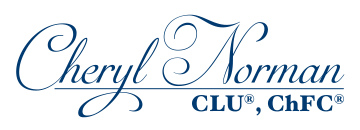As springtime approaches, it serves as a timely reminder of the importance of planting seeds for future financial enjoyment. Just as a gardener carefully tends to their garden, if we nurture and cultivate our investment portfolios, we can help maximize the opportunity for a bountiful harvest. With the arrival of spring, now is the perfect time to look at our financial landscape, prune our portfolios, and strategically plant seeds in the right places.
Pruning Your Portfolio
Spring is traditionally a time for pruning, where gardeners carefully trim away dead or overgrown branches to promote healthy growth. Similarly, it’s a good time to review and adjust investment portfolios to ensure they are aligned with both short-term and long-term goals, risk tolerance and tax-efficiency. Are there opportunities to diversify and rebalance your portfolio? Taking time for a thorough review of the balance of assets in both qualified and non-qualified accounts can optimize your investments for current and future tax-efficiency. To help illustrate, create a pie chart showing the ratio of qualified (401(k), IRA) assets and non-qualified (individual or joint account) assets. Next, analyze how these assets are invested (i.e., cash, stocks, mutual funds) and see if they are in balance.
To help our clients, we use financial planning software that assists with this analysis and can also forecast future balances within the individual pie slices. This analysis will help determine if your allocations are balanced.
Consider the analogy of having an over-abundance of tomatoes in your garden as often happens when we over-zealously plant in the spring. Are we planting too many seeds in tax-deferred assets and are, therefore, over-weighted relative to your income tax-free assets (non-qualified investment accounts like Individual, Joint, or Transfer on Death accounts). It is important to look at the ratio of income tax-free and tax-deferred assets so when retirement rolls around the income-taxable investments haven’t become over-grown relative to non-income taxable assets available for retirement.
Selecting the Right Savings Vehicles
Just as different plants require specific soil conditions to thrive, your savings also need to be planted in the right investment buckets. From retirement accounts to non-qualified brokerage accounts, each type of account serves a unique purpose in your financial landscape. For example, Individual Retirement Accounts (IRAs) and Roth IRAs offer tax advantages for retirement savings, while non-qualified brokerage accounts provide flexibility and accessibility for shorter-term goals as well as a source of tax-free cash flow in retirement (but taxed at dividend and capital gain rates). By diversifying across different account types, you can maximize tax efficiency and accessibility. Tailor your investing strategy to create the cash-flow needed in retirement as income tax-efficiently as possible.
Allocating Funds Across Account Types
It is essential to strike a balance between different types of accounts. Allocating funds across IRAs, Roth IRAs, and non-qualified accounts can help you optimize tax advantages while maintaining liquidity and flexibility.
For instance, consider allocating a portion of your savings to tax-deferred accounts like traditional IRAs to benefit from tax-deductible contributions and tax-deferred growth. At the same time, contribute to Roth IRAs or non-qualified accounts to diversify your tax exposure and maintain accessibility to funds.
Consistency and Discipline
Just as a garden requires consistent care and attention, financial success relies on discipline and balance. Make saving a priority by establishing a regular savings plan and automating contributions to an array of investment accounts.
Stay disciplined in your investing habits and trust in the power of compounding to help your investments grow and thrive.
Conclusion
As spring unfolds, let it serve as a reminder to cultivate your investment portfolio with care and intention. Prune your portfolio, diversify across different account types, and stay disciplined in your savings habits. By taking these steps now, a potentially greener financial landscape can blossom and bear fruit for years to come. If you are ready to discuss pruning your portfolio and optimize your savings strategy, visit our website at www.flagshipcapitaladvisors.com or give me a call.
With our expertise and guidance, we can help cultivate the complex landscape of investment strategies to help you achieve your goals for a bright and abundant future.


